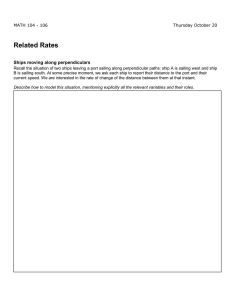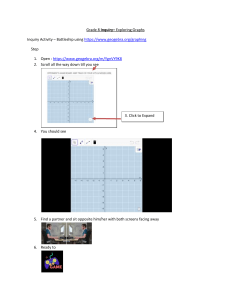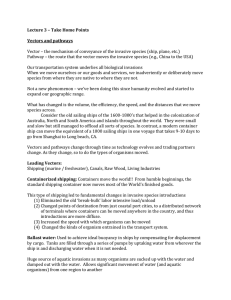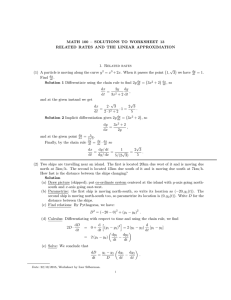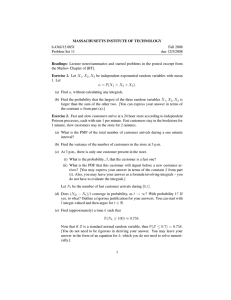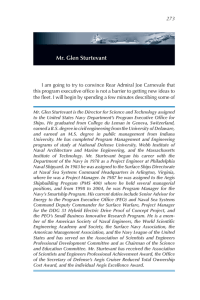1. 6 marks
advertisement
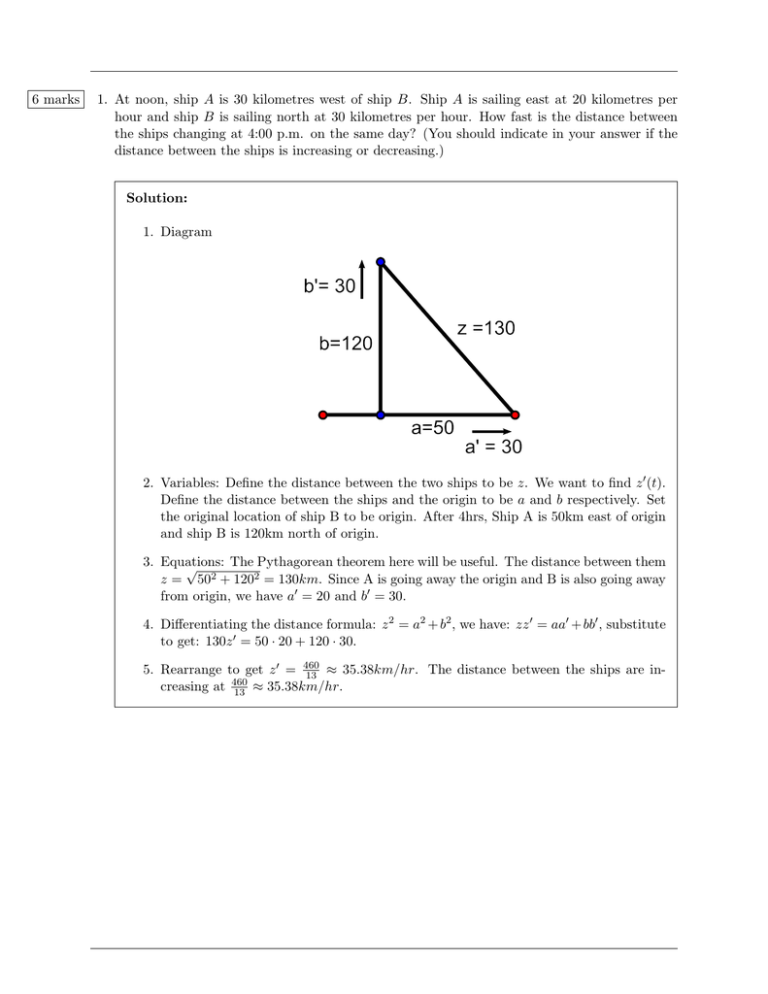
6 marks 1. At noon, ship A is 30 kilometres west of ship B. Ship A is sailing east at 20 kilometres per hour and ship B is sailing north at 30 kilometres per hour. How fast is the distance between the ships changing at 4:00 p.m. on the same day? (You should indicate in your answer if the distance between the ships is increasing or decreasing.) Solution: 1. Diagram 2. Variables: Define the distance between the two ships to be z. We want to find z 0 (t). Define the distance between the ships and the origin to be a and b respectively. Set the original location of ship B to be origin. After 4hrs, Ship A is 50km east of origin and ship B is 120km north of origin. 3. Equations: The Pythagorean theorem here will be useful. The distance between them √ 2 z = 50 + 1202 = 130km. Since A is going away the origin and B is also going away from origin, we have a0 = 20 and b0 = 30. 4. Differentiating the distance formula: z 2 = a2 + b2 , we have: zz 0 = aa0 + bb0 , substitute to get: 130z 0 = 50 · 20 + 120 · 30. 5. Rearrange to get z 0 = 460 13 ≈ 35.38km/hr. The distance between the ships are increasing at 460 ≈ 35.38km/hr. 13 3 marks 2. (a) Use a linear approximation to estimate ln(0.9). Solution: For this linear approximation, we want to pick f (x) = ln(x) and a = 1. Then f (x) = ln(x) 1 f 0 (x) = x f (1) = 0 f 0 (1) = 1 So that means our linear approximation is: L(x) = f (a) + f 0 (a)(x − a) L(x) = 0 + 1(x − 1) = x − 1 Since we are interested in x = 0.9, we get: L(0.9) = (0.9 − 1) = −0.1. So ln(0.9) ≈ −0.1. 1 mark (b) Is your answer in part (a) an overestimate, an underestimate, or exactly equal to, the actual value of ln(0.9)? Justify your answer. Solution: This function is an over approximation since the function L(x) is above the function ln(x) at x = 0.9.
